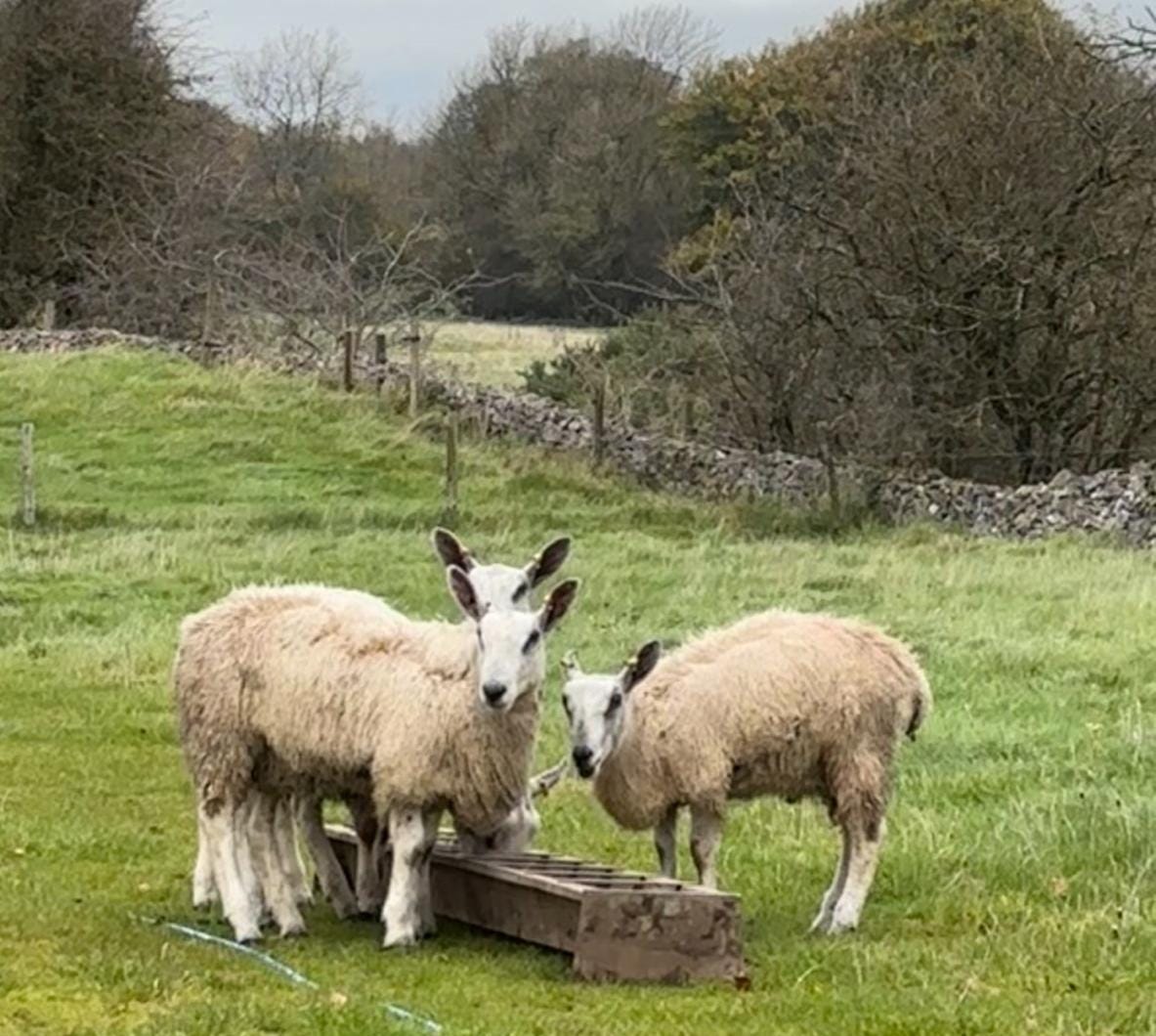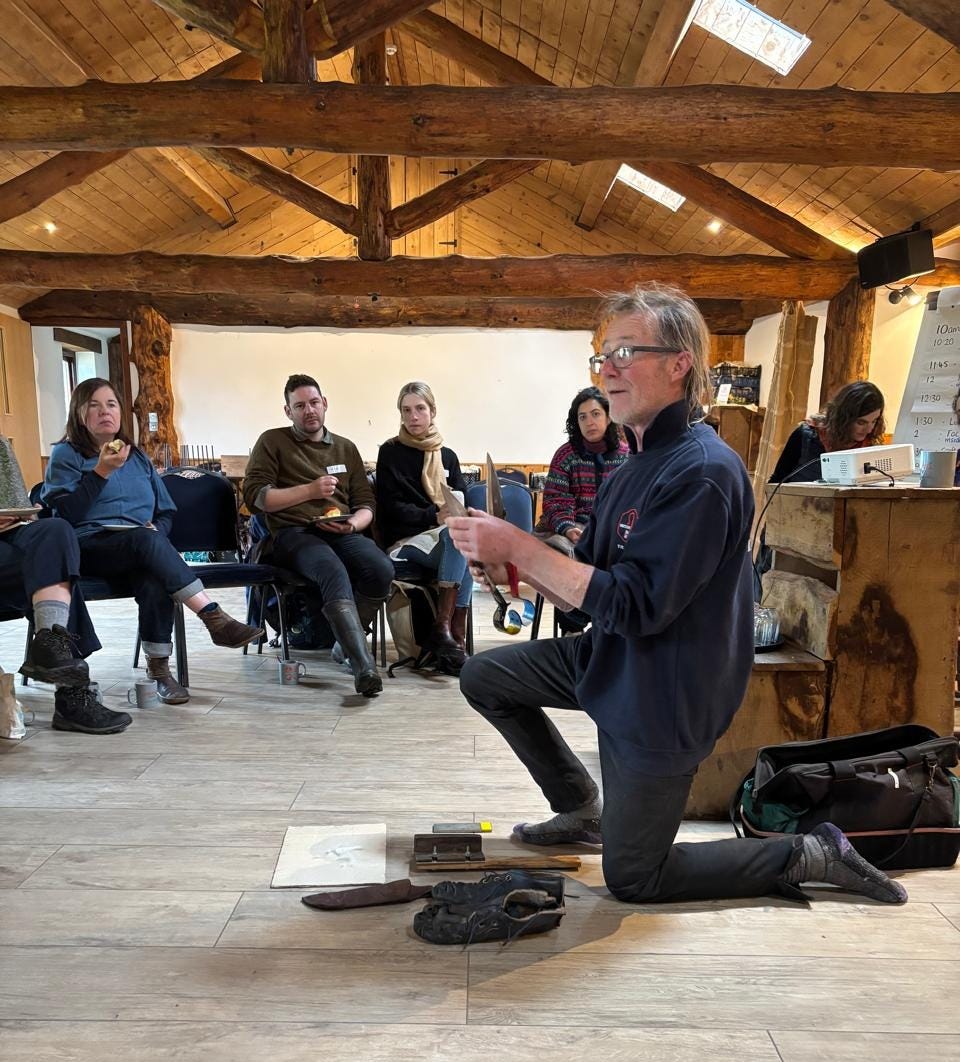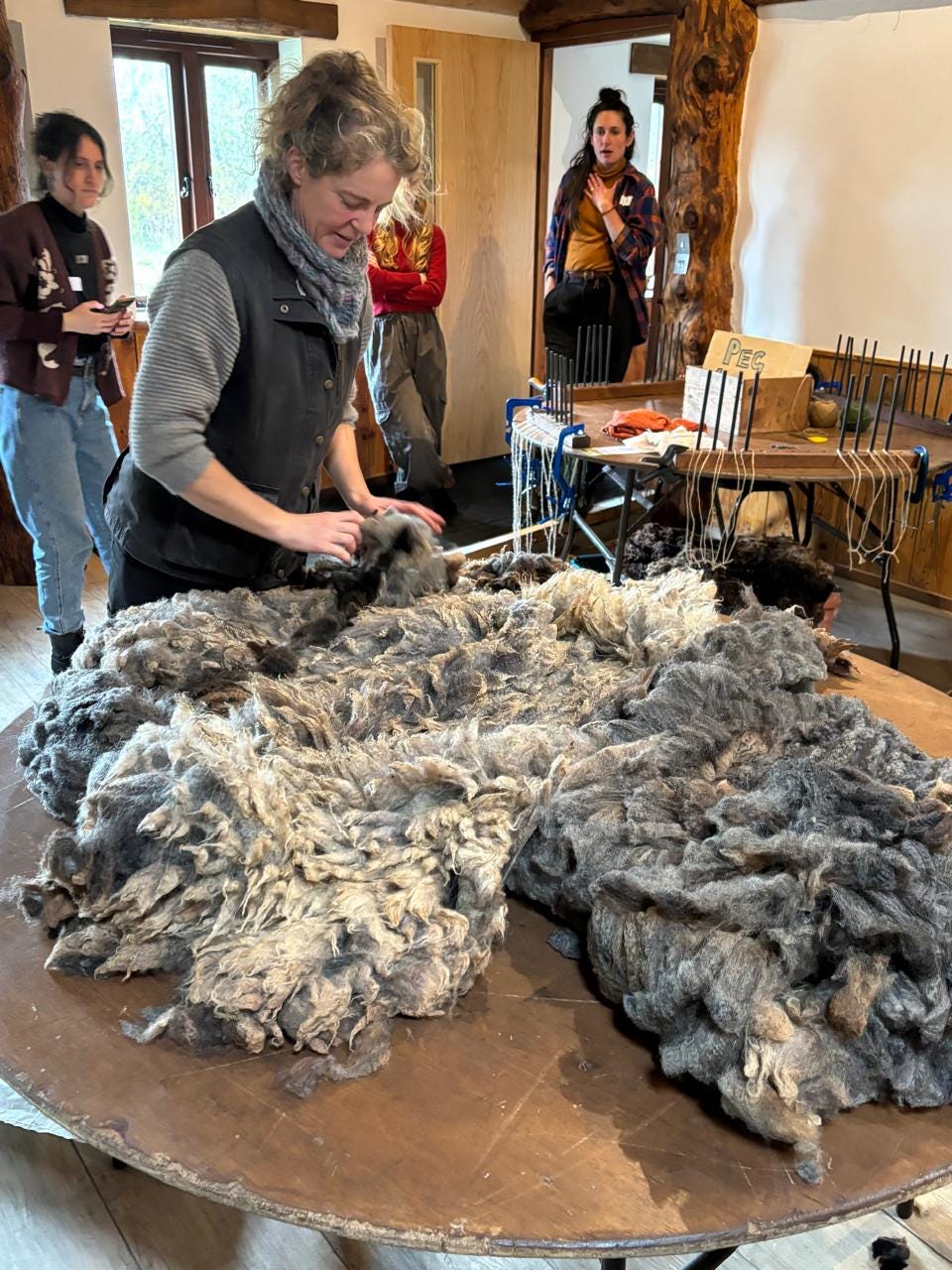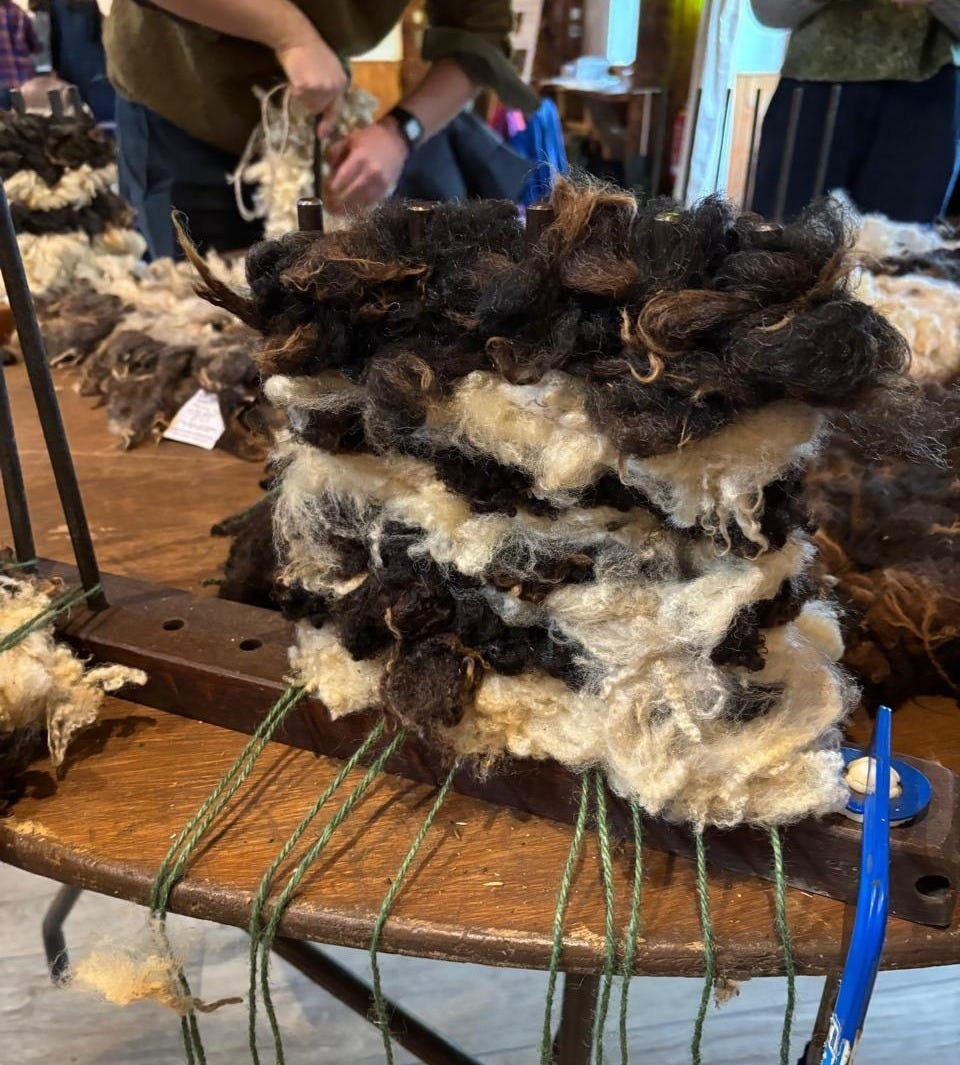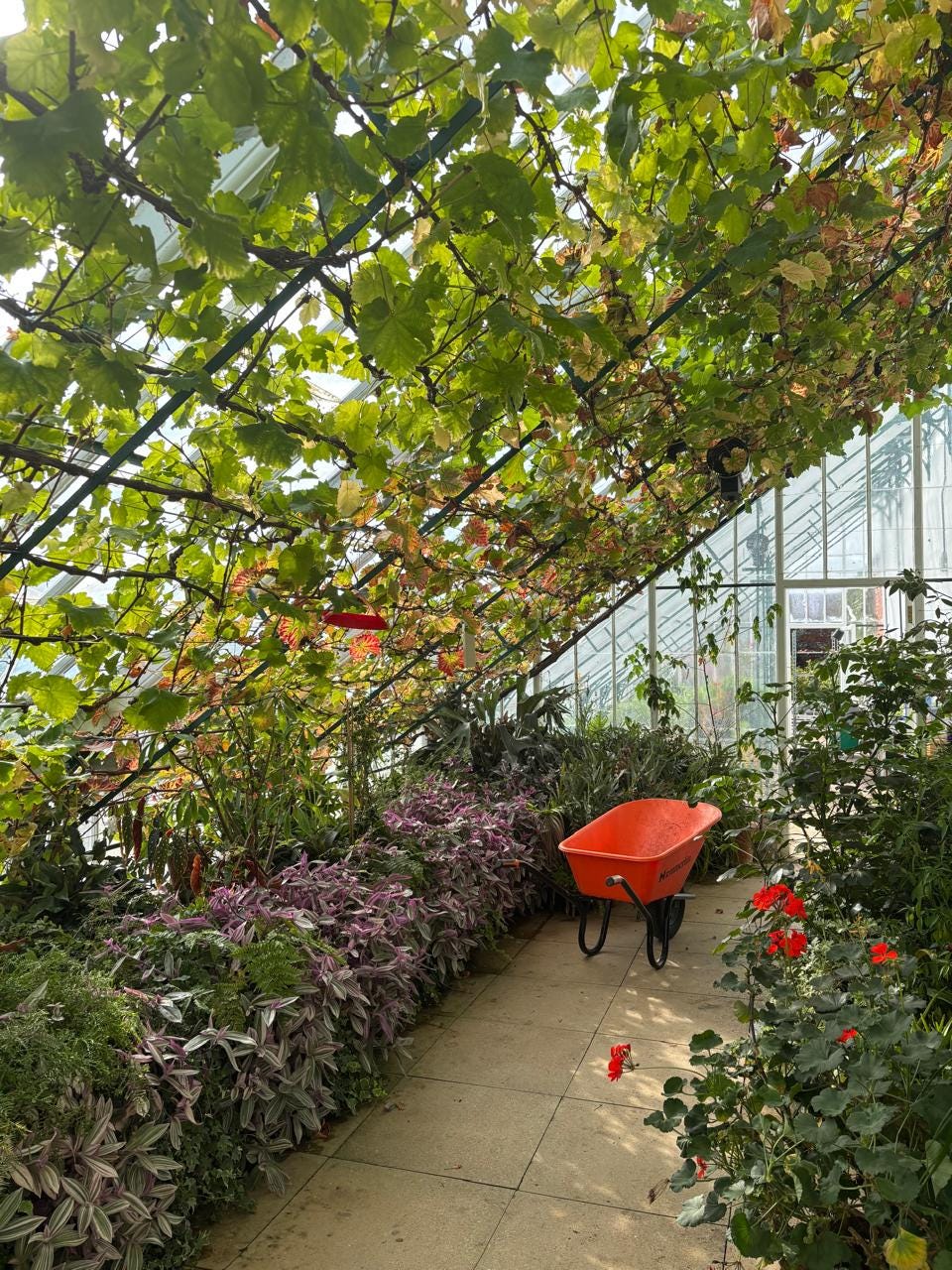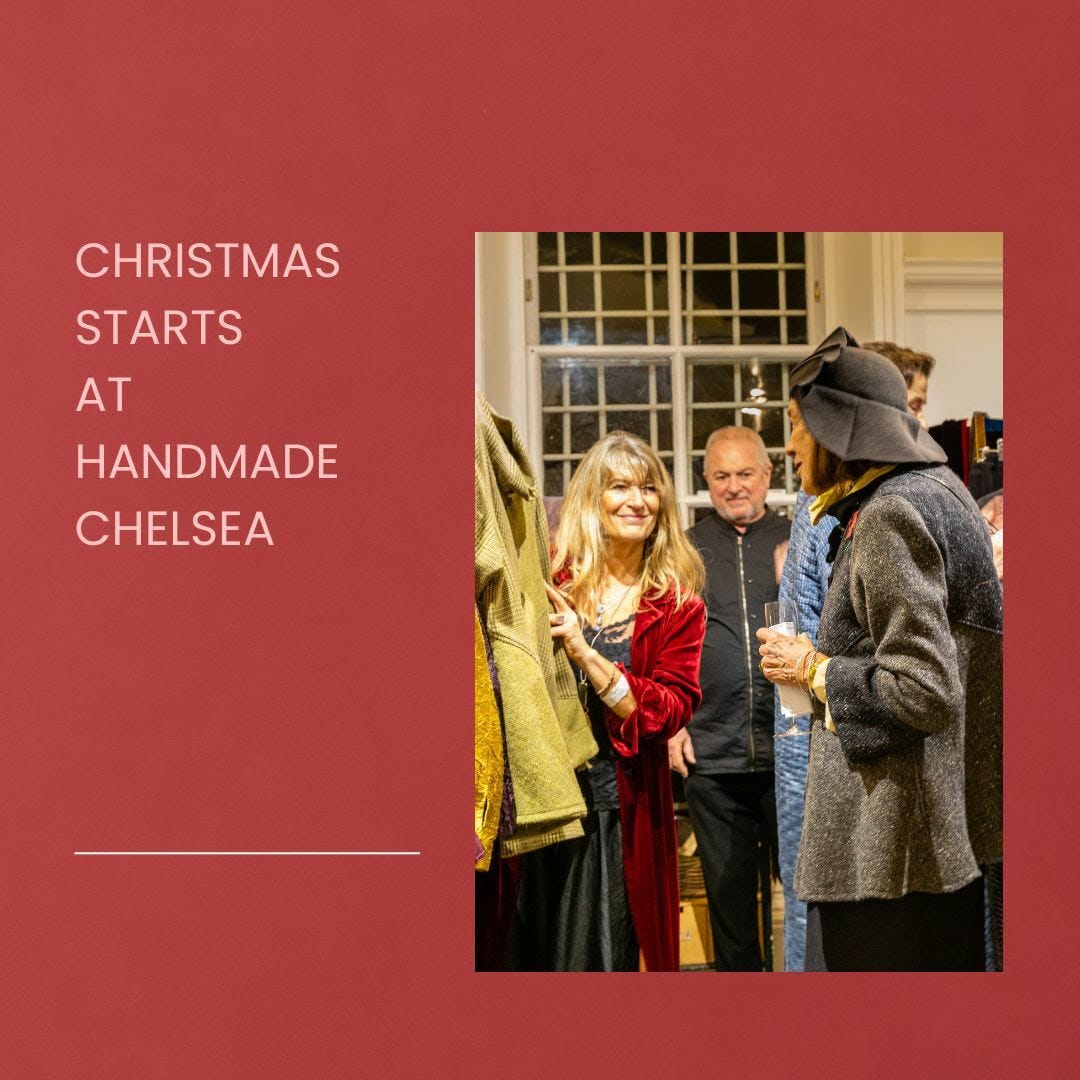Fashion Field Trip to Fernhill Farm
PLUS: Harriet Fletcher-Gilhuys's overview of her guest lecture at BSU
Last week, Fashion Roundtable Policy Researcher Alix Coombs had the chance to join the ‘Fashion Field Trip’ organized by Fibreshed Southwest England, which took place at Fernhill Farm in the Mendips. Joined by academics from nine institutions across the Southwest, this wasn’t just a farm visit; it was an immersive experience that reconnected us with the very source of sustainable materials and regenerative farming practices.
The day started with a beautiful drive out to the Mendips. On arrival, the setting instantly felt inviting—Fernhill Farm is not only a stunning piece of land but also a testament to sustainable living and deep respect for nature. After a short round of introductions, we set out for a sensory immersion walk through the fields. This walk was all about reawakening a connection between our surroundings and the fabrics, colours, and textures we wear daily.
After our walk, we gathered in the field to listen to the farm’s owners, Jenn and Andy, share the inspiring journey they embarked on 30 years ago when they established Fernhill Farm. They told us how their circular and regenerative approach was once considered “out there,” but now stands as an ideal model. Their farm is a beautiful example of working with, rather than against, the natural cycles of the land. They prioritize the welfare of their animals and soil health, making Fernhill both sustainable and ethical at every step. Andy’s blade shearing demonstration later in the day was particularly eye-opening; this technique is better for the sheep’s health and well-being, which in turn contributes to a higher-quality wool product.
Exploring the farm further, we had a close-up look at Fernhill’s resident animals and examined the ground as we walked, spotting oak trees springing up, bugs in the cow pats, and other interesting features of the landscape. We were introduced to Fernhill’s newest additions—four Bluefaced Leicester sheep who had arrived that morning in preparation for breeding. After the walk, we gathered back inside for a hot cup of tea and a lesson in blade shearing from Andy, followed by a session from SWE Fibreshed’s Emma Hague, who walked us through the Fibreshed model.
My favourite part of the day was getting hands-on with some raw fleeces. We got to play around with wool from many different sheep, paying attention to the different textures and uses depending on the breeds. Jenn also brought out a whole fleece to demonstrate grading practices. Her knowledge and passion clearly run deep, so much so that she could tell exactly which part of the sheep any piece of wool we picked up came from.
After a quick lunch of mutton stew, very much aligned with the farm’s circular model, we sat down together as a group to learn about all of the bacteria and microorganisms in soil from Melissa Thompson. With her microscope projecting onto a screen, Melissa talked us through what we could see in soil samples she’d collected at the farm that morning. The diversity of Fernhill’s soil was clear, with bacteria, amoeba, and many other living organisms thriving in the samples.
For our last activities, we tried our hand at some crafts. First, we used a peg loom to weave tuffets, then tried our hand at carding and spinning using both a spindle and a spinning wheel—both harder than they looked! After that, we sat down once more to reflect on our key takeaways for the day, before checking out the Fernhill Farm and Fiber shop on our way out. The shop showcases beautiful products made locally from Fernhill’s fleeces. Seeing these finished pieces, I felt a new appreciation for the entire process—from farm to fibre. It’s hard not to leave inspired by Jenn and Andy’s dedication, which extends beyond their work to a lifestyle rooted in principles that have sustained communities for generations.
Reflecting on this experience, it’s clear that building bridges between institutions and farms like Fernhill is essential for students and emerging industry professionals. At Fashion Roundtable and NCFS, we’re eager to create similar hands-on opportunities that connect students to the full scope of the fashion supply chain, deepening their understanding of sustainability from the ground up.
As Bath Spa University’s Joshua Williams, Senior Lecturer in Fashion Marketing and Management, said, “fashion starts with the land, and the soil, which we often forget. Spending meaningful time on Fernhill Farm showed us, in a hands-on way, how careful land management can lead to sustainable wool production. It offers an alternative to high-carbon, globalised supply chains instead focusing on community and fibre sovereignty. Ideas we will certainly explore with our students on the MA Fashion Management and with our National Centre for Fashion and Sustainability.”

Thanks to Fernhill Farm for having us and to the SWE Fibreshed team for putting together such amazing field trip. If you ever get the chance to visit Fernhill Farm, I highly recommend it. Their twice-yearly open days are a wonderful introduction to the world of regenerative farming and ethical fibre production—and you might even learn to shear a sheep!
By Alix Coombs
PLANTS AND PEOPLE: with Dr Lori Bystrom. Guest Lecture at Bath Spa University, 11th October 2024
In my capacity as Fashion Roundtable’s Wool Researcher, I recently delivered an exciting and empowering guest lecture to Dr. Lori Bystrom’s ‘people and plants’ class at Bath Spa University’s Newton Park Campus. Addressing students from a wide range of disciplines to encourage cross disciplinary learning, the lecture explored the power of Plants and People and how these relationships overlap into many disciplines such as science, engineering, textiles, fashion and materials.
BSU is currently in the development and planning phase for starting a ‘purposeful plant garden’ to engage students in a wider range of teaching and learning activities. The garden will put sustainable development at the forefront while making use of the incredible grounds that Newton Park has to offer, including the tranquil view of sheep that graze the land.
The day began with a tour around the Edwardian glasshouse which is located in a walled garden area. It houses a student-run allotment with a range of different fruits that grow along the walls (apples, pears, cherries, plums etc.).
It is also home to a variety of different plant species, wild flowers and many historical books. The space acts as a central hub for learning and engagement, allowing students to meet with expert gardeners and engage in participatory learning experiences outside the classroom. Next, we toured around the rest of the walled garden with Penny Snowden, the BSU Grounds Manager, to see the brilliant work she and her team have done to restore the gardens to their former glory, including a student-led fruit and vegetable garden, detailed plant labelling using original tags, and of course the space where the natural dye garden will be planted.
We then headed over to the lecture theatre to meet the students. Dr. Bystrom began the lecture discussing plant taxonomy or in other words how plants are classified. The focus was mainly on plant families and their key botanical features. She also explained the Latin scientific names (binomial nomenclature) of plants and how these names are derived from their appearance, biological effects, provenance or other languages.
It was also highlighted that the evolutionary relationships of plants can be used as a source of design inspiration, as shown in the Bristol Botanic Garden's Angiosperm phylogeny display. This garden design is a clever way to guide visitors around the gardens while teaching them about the evolutionary relationships and categorisation of flowering plants.
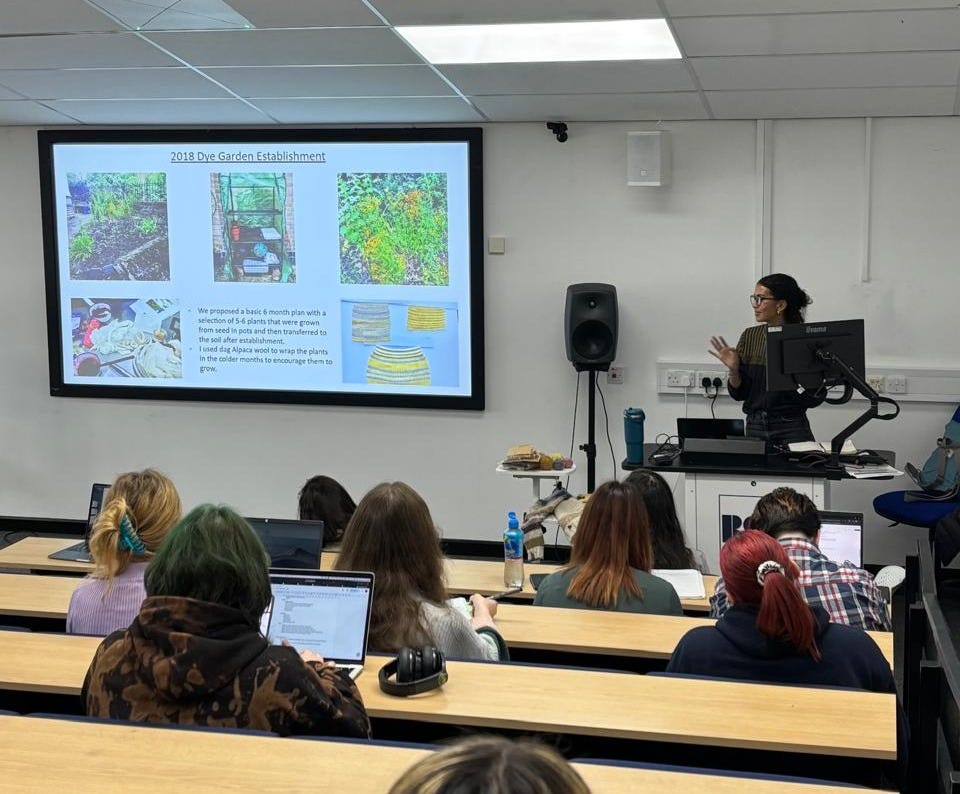
This led smoothly into my lecture, which focused on natural dyeing for fashion and textiles. I started by discussing the launch of the Nottingham Trent University dye garden in 2018 and how this sparked my interest around natural dye processes and the current gap in teaching around these heritage crafts. I walked the students through my research journey throughout my BA and MA, where I was heavily inspired by Fibreshed to set myself the challenge of creating my own internal natural fibre and dye system. This included harvesting, collecting and naturally dyeing all of my materials myself, with the garden becoming an integral part of my learning.
This then led into an overview of my work at the Royal College of Art, where I took a regenerative systems thinking approach to design methodology, analysing British wool systems at both a micro and macro scale. This took place alongside a cross-disciplinary group project, where we designed a regenerative dye garden and secured funding, which is now being used for established at RCA Kensington.
My aim for the lecture was to highlight to the students the importance of relationships between plants and people, and how we have become so disconnected from the natural world and ancient crafts, particularly natural dyeing, which is rarely taught at universities or available as a resource in dye labs.
This lack of access can make it hard for interested students to know where to start, and to secure base knowledge such as the realistic time frame from harvesting to end result, and to understand the importance of giving yourself enough time to practise in order to ensure that results can be repeated. I emphasised to the students the importance of starting these experiments in their first year in order to be confident in their colour mastery by the final year.
We had many fruitful conversations referencing the amazing work of Babs Behan from Botanical Inks and Jenny Dean’s book ‘Wild Colour’, many of the incredible books and sources that have travelled with me over the years during tests and tribulations.
The purposeful plant garden at BSU is an exciting venture that will create extensive research opportunities around bio-mordants and add an extra level of sustainability and traceability knowledge to BSU students’ learning. Establishing the garden will also ensure the relationship between plants and people can naturally evolve to get students thinking about how they can incorporate these practices into their work for years to come, while also working to preserve heritage crafts in the next generation.
Event: Handmade Chelsea, 7th - 9th November 2024
One of the UK’s leading craft fairs, Handmade Chelsea, is back for its 17th edition on 7th - 9th November 2024.
This annual event will transform the historic venue into a hub of creativity, featuring more than 110 of the nation's top designer-makers. Visitors can explore a diverse range of crafts, from intricate jewellery and handwoven textiles to bespoke furniture and decorative glass. The fair will also present functional ceramics, fine art, prints, illustrations, and cutting-edge fashion—all celebrating the best of British craftsmanship.

Key Insights from the CFIN Interim Report
The Circular Fashion Innovation Network (CFIN) presents its Interim Report, marking a significant milestone in the journey towards a UK circular fashion ecosystem by 2032.
This comprehensive document synthesises a year's worth of stakeholder engagement and research, focusing on three pivotal areas:
Circular Business Models
Sustainable Manufacturing
Recycling Infrastructure
Key Highlights:
Challenges around scaling circularity identified, with key insights from across industry
Potential for reshoring UK apparel manufacturing identified
Need for a National Textile Recycling Infrastructure Plan emphasised
The report outlines crucial next steps, including developing an accelerator programme for circular business models, exploring increased UK manufacturing capacity, and advocating for Extended Producer Responsibility schemes.
This Interim Report serves as an essential resource for industry professionals, policymakers, and researchers, providing actionable insights to propel the UK towards leadership in circular fashion. It underscores the importance of collaboration, innovation, and systemic change in creating a more sustainable fashion future.
Online Webinar: UK Export Academy Doing Business in Poland, tomorrow 30th October 2024 at 2pm
Discover essential strategies for smooth UK-Poland exports, with KPMG case studies to avoid border delays and reduce costs.
What you’ll learn
Presentation of practical examples of moving goods from UK to Poland covering in detail aspects such as:
- Customs process – required data and documents
- Rules of Origin – case study
- Solutions to reduce customs burdens or simplify formalities for EU importers
- VAT issues related to the export of goods to Poland

Vivz World Fashion Week, Dubai, UAE - 20th October 2024
Dubai witnessed a night like no other as Vivz World Fashion Week unfolded in all its glory, leaving an indelible mark on the global fashion calendar.
Renowned for its presence in fashion capitals such as London, Milan, and Paris, the event made its triumphant return to Dubai with an extraordinary showcase that blended fashion, royalty, and visionary excellence. It was more than just a fashion event—it was a fusion of creativity, royal elegance, and global achievement, making it a historic evening in the world of luxury and haute couture.
International designers, including Maria Chanji and Aisha Alshamsi of Sanabel , showcased their masterpieces on the runway.
This year’s edition of Vivz World Fashion Week was more than just a runway show—it was a celebration of global creativity, philanthropy, and leadership. The convergence of royalty, visionaries, and fashion trailblazers on one stage, in one-night, solidified Vivz Fashion School as a global powerhouse, creating a legacy that will be remembered for years to come.



